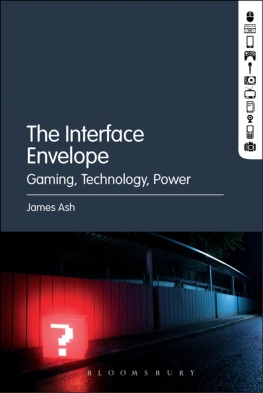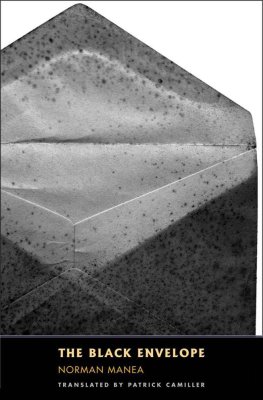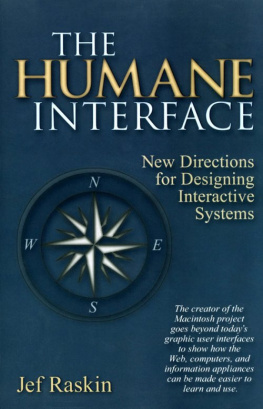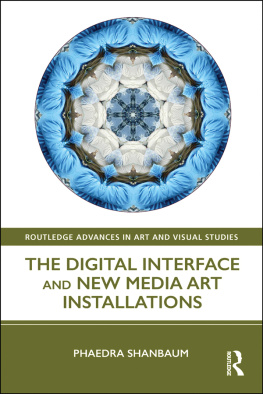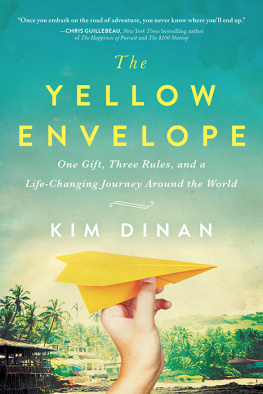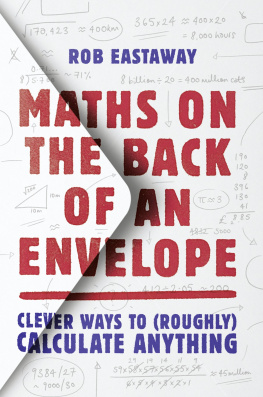James Ash - The Interface Envelope
Here you can read online James Ash - The Interface Envelope full text of the book (entire story) in english for free. Download pdf and epub, get meaning, cover and reviews about this ebook. year: 2019, publisher: Bloomsbury USA, genre: Romance novel. Description of the work, (preface) as well as reviews are available. Best literature library LitArk.com created for fans of good reading and offers a wide selection of genres:
Romance novel
Science fiction
Adventure
Detective
Science
History
Home and family
Prose
Art
Politics
Computer
Non-fiction
Religion
Business
Children
Humor
Choose a favorite category and find really read worthwhile books. Enjoy immersion in the world of imagination, feel the emotions of the characters or learn something new for yourself, make an fascinating discovery.
- Book:The Interface Envelope
- Author:
- Publisher:Bloomsbury USA
- Genre:
- Year:2019
- Rating:5 / 5
- Favourites:Add to favourites
- Your mark:
- 100
- 1
- 2
- 3
- 4
- 5
The Interface Envelope: summary, description and annotation
We offer to read an annotation, description, summary or preface (depends on what the author of the book "The Interface Envelope" wrote himself). If you haven't found the necessary information about the book — write in the comments, we will try to find it.
The Interface Envelope — read online for free the complete book (whole text) full work
Below is the text of the book, divided by pages. System saving the place of the last page read, allows you to conveniently read the book "The Interface Envelope" online for free, without having to search again every time where you left off. Put a bookmark, and you can go to the page where you finished reading at any time.
Font size:
Interval:
Bookmark:
The Interface
Envelope
The Interface
Envelope
Gaming, Technology, Power
JAMES ASH
Bloomsbury Academic
An imprint of Bloomsbury Publishing Inc

For Calum
T his book is the result of several years of thinking about interfaces, objects, affect, space, time, materiality and gaming. In many ways the book is interdisciplinary, sitting at the crossroads between cultural geography, media and cultural studies, game studies and media and social theory. Writing from an interdisciplinary perspective, the explicit aim of this book is to create a series of concepts that theorize interfaces by linking aspects of these diverse areas of literature together. Drawing upon geographical ideas of space and time, media theorizations of interfaces and cultural understandings of materiality, I hope the book creates productive connections that can speak to and benefit all of the above audiences.
The writing of the book has benefitted from the support of many friends and colleagues, both directly and indirectly. I would like to thank JD Dewsbury, Phil Crang and Gillian Rose, who offered advice and institutional support at key moments in the past. My sincere thanks go to Pepe Romanillos, Richard Carter White, Charlie Rolfe, Sam Kinsley and Paul Simpson. As colleagues in the School of Geographical Sciences at Bristol University between 2005 and 2009, they set a very high benchmark and encouraged me to improve and develop my own work. I also want to thank Pepe for giving me Technics and Time 1 as a birthday present in 2005. I had never encountered Stiegler before and reading this text introduced me to phenomenology, which had a transformative effect on my thinking. More broadly, I would like to thank Paul Harrison, Ben Anderson, Matt Wilson and John Wylie, who have offered sage advice relating to various aspects of academic life. Their openness and generosity has helped on a number of occasions and I hope I can dispense equally good advice to others in the future.
The book has benefitted from audiences who have heard and responded to versions of various chapters at seminars between 2012 and 2014. Versions of approved a semester of study leave that enabled me to finish and submit the manuscript. Finally, thanks to Pepe Romanillos, Paul Simpson and Lesley Gallacher for reading versions of the manuscript and offering advice. All errors remain my own.
As the window of a Web browser replaced cinema and television screen, the art gallery wall, library and book, all at once, the new situation manifested itself: All culture, past and present, came to be filtered through a computer, with its particular human-computer interface.
MANOVICH (2001: 64)
[the interface is] the place where flesh meets metal or, in the case of systems theory, the interface is the place where information moves from one entity to another, from one node to another within the system.
GALLOWAY (2009: 936)
A s Lev Manovich argues, human life in the western world is increasingly mediated by digital, computational interfaces. Computers, laptops, tablet PCs, mobile phones, videogames and many other devices operate as the medium through which a variety of activities are undertaken. In a general sense, as Alexander Galloway suggests, the term interface refers to a surface or point of contact between two entities. These can be between a human being and a technical object (in the case of a tool) or between two technical objects (in the case of software). As such, an interface can be a door handle, a steering wheel or a baseball bat as much as graphical user interface on a personal computer or a key on a keyboard. Further reflecting on the concept of interface in relation to software, Galloway (2009: 936) goes on to argue:
the interface becomes the point of transition between different mediatic layers within any nested system. The interface is an agitation or generative friction between different formats. In computer science, this happens very literally; an interface is the name given to the way in which one glob of code can interact with another. Since any given format finds its identity merely in the fact that it is a container for another format, the concept of interface and medium quickly collapse into one and the same thing.
Any serious consideration of what an interface is opens up a broader question about the relationship between concepts of the medium, object and technology. Upon closer examination an interface appears to be a medium itself, a piece of technological equipment as well as an object. Understandings of the interface (digital or otherwise) as a surface or space of contact are also loaded with specific assumptions about how objects, whether natural or technical, encounter and relate to one another in general. Indeed, questions about what an object is, what a technical object is and how these objects relate to one another are a central concern of philosophy itself. Famously, Martin Heidegger (1982: 45) argued that technology has been understood from an instrumental perspective:
we ask the question concerning technology when we ask what it is. Everyone knows the two statements that answer our question. One says: Technology is a means to an end. The other says: Technology is a human activity. The two definitions of technology belong together. For to posit ends and procure and utilize the means to them is a human activity. The manufacture and utilization of equipment, tools and machines, the manufactured and used things themselves, and the needs and ends they serve, all belong to what technology is. The whole complex of these contrivances is technology . Who would ever deny that it is correct.
Drawing upon Heideggers definition, interfaces can be understood as mediums, objects and technologies. They exist in order to fulfil operations and, thus, are a means to an end; they are created through the human shaping of matter and also operate as a tool for human action. Despite his own criticism of the definition, Heideggers (1982: 20) instrumental account remains prevalent. Implicit in this narrative is an assumption that objects are ultimately substances with specific properties and that what differentiates technology from naturally occurring objects is the extent to which these properties have been manipulated by humans. For example, a stone is a natural object that has been produced by non-human processes such as erosion or weathering, while a flint is a technical one, because the flint has been broken by humans against other stones to create a sharpened point.
This book demonstrates that, as technical objects, interfaces can be understood in ways that are not reducible to this instrumentality. By rethinking categories surrounding matter, objects and technology, the chapters that follow develop a series of concepts in order to understand human practices with interfaces as potentially productive of what I term spatio-temporal envelopes. For now, envelopes can be defined as localized foldings of space-time that work to shape human capacities to sense space and time for the explicit purpose of creating economic value for the designers and creators of these interfaces. Through examining a number of contemporary videogames, I argue that creating economic value in this way can be understood as a new form of power, which I term envelope power.
Videogames are a useful site to theorize these interface envelopes for a number of reasons. First, videogame interface design is subject to rapid and continual change and so offers a window into the technical historicity of the interface. The past twenty years have seen huge innovations in how information is conveyed to players in videogames. Games consoles have moved from simple, single-button joysticks to a situation in which a large number of players now interact with games using remotes and cameras that can register complex forms of analogue bodily movement. Videogames, therefore, offer a wealth of examples of different Graphical User Interfaces (GUIs) all of which have different logics and mechanics (Jrgensenn 2013). This allows us to study different videogames and analyse the different envelopes they attempt to generate.
Next pageFont size:
Interval:
Bookmark:
Similar books «The Interface Envelope»
Look at similar books to The Interface Envelope. We have selected literature similar in name and meaning in the hope of providing readers with more options to find new, interesting, not yet read works.
Discussion, reviews of the book The Interface Envelope and just readers' own opinions. Leave your comments, write what you think about the work, its meaning or the main characters. Specify what exactly you liked and what you didn't like, and why you think so.

